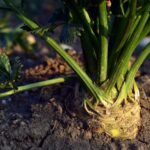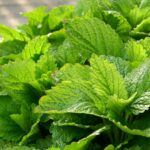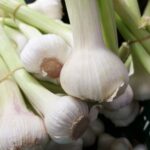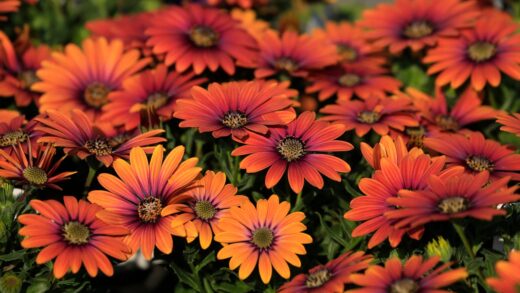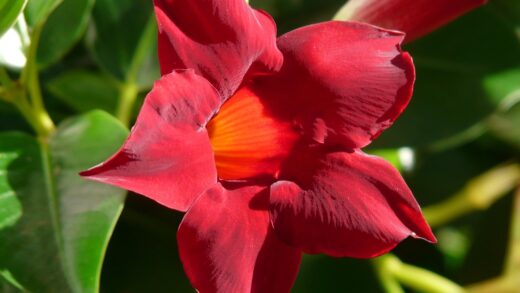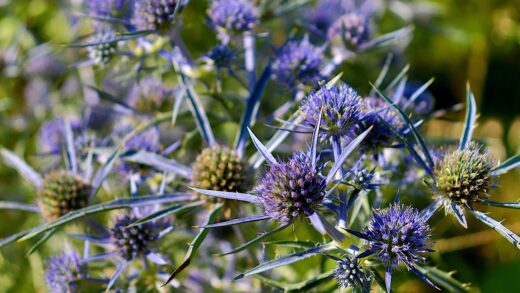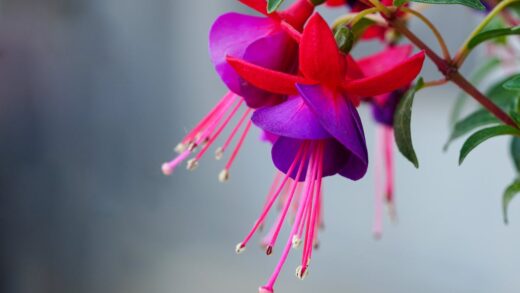Providing the right amount of water at the right time is one of the most critical aspects of successfully cultivating vibrant and healthy cape daisies. These stunning, sun-loving plants have specific hydration needs that are closely linked to their South African origins, where they adapted to conditions with periods of both moisture and drought. Understanding this background is key to avoiding the common pitfalls of both overwatering and underwatering, either of which can lead to poor performance, disease, or even the demise of the plant. A well-executed irrigation strategy ensures a strong root system, lush foliage, and a continuous display of breathtaking flowers throughout the growing season. This article will delve into the specific water requirements of the cape daisy and provide practical guidance on a professional irrigation approach.
Cape daisies, while being moderately drought-tolerant once they are fully established, perform best when they receive a consistent supply of moisture. The term “drought-tolerant” can often be misleading, as it does not mean the plant thrives on neglect; rather, it indicates an ability to survive short periods of dryness. For optimal growth and prolific blooming, the goal is to maintain a steady level of soil moisture without ever allowing the soil to become waterlogged or to dry out completely for an extended period. During the active growing seasons of spring and early summer, when the plant is producing new leaves and a multitude of flower buds, its water needs are at their highest.
The fundamental principle of watering cape daisies is to water deeply and less frequently, rather than shallowly and often. Deep watering encourages the plant’s roots to grow further down into the soil in search of moisture. This creates a more extensive and resilient root system that is better able to withstand periods of heat and drought. When you water, you should apply enough so that the moisture penetrates at least six to eight inches into the soil profile. This ensures that the entire root zone is thoroughly hydrated. Shallow watering, in contrast, only moistens the top layer of soil, encouraging a shallow root system that is much more susceptible to drying out quickly.
The most reliable way to determine when your cape daisies need water is to check the soil moisture manually. Simply insert your finger into the soil near the base of the plant to a depth of about two inches. If the soil feels dry at this depth, it is time to water. If it still feels moist, you should wait another day or two and check again. This hands-on method is far more accurate than adhering to a rigid, predetermined watering schedule, as the actual water needs of the plant will fluctuate significantly based on factors like temperature, humidity, rainfall, wind, and the plant’s stage of growth.
It is also important to consider the differences in watering needs between plants grown in garden beds and those in containers. Plants in pots, hanging baskets, and window boxes will dry out much more quickly than those planted in the ground. This is due to the limited volume of soil, which holds less water, and increased exposure to sun and wind on all sides of thecontainer. During hot, windy weather, you may need to water your container-grown cape daisies every day, while those in the garden might only need a deep watering once or twice a week.
More articles on this topic
Understanding signs of water stress
Recognizing the visual cues of water stress is a crucial skill for any gardener wanting to maintain healthy cape daisies. The most obvious sign of underwatering is wilting. When the plant does not have enough water, its cells lose turgor pressure, causing the leaves and stems to droop and appear limp. While cape daisies can often recover quickly from a brief period of wilting once they are watered, repeated or prolonged wilting can cause permanent damage to the plant tissues, leading to leaf drop and a cessation of flowering. Catching this sign early and providing a deep, thorough watering is essential.
Another clear indicator of insufficient water is a change in the foliage. The leaves may begin to look dull, lose their vibrant green color, and start to turn yellow or brown, particularly around the edges. This is often accompanied by the drying and crisping of the lower leaves on the plant, as the plant sacrifices its older foliage to conserve moisture for the newer growth at its tips. If you notice these symptoms, it is a clear signal that your irrigation practices are not meeting the plant’s hydration needs and you need to increase the frequency or volume of watering.
Conversely, overwatering is an even more dangerous and often less obvious problem for cape daisies. The symptoms of overwatering can paradoxically mimic those of underwatering. The leaves may turn yellow and wilt, but they will often feel soft and limp rather than dry and crispy. This occurs because the waterlogged soil deprives the roots of oxygen, causing them to suffocate and begin to rot. As the root system becomes damaged, it can no longer absorb water and nutrients effectively, leading to the wilting and discoloration of the foliage, even though the soil is saturated.
The most definitive sign of overwatering is the condition of the soil and the plant’s root system. If the soil around your plant is consistently soggy, has a sour smell, or has green algae growing on its surface, you are likely applying too much water. If you suspect root rot, you may need to gently remove the plant from its pot or the ground to inspect the roots. Healthy roots should be firm and white or light-colored. Rotted roots will be brown or black, mushy to the touch, and may easily fall apart. If root rot is present, you must trim away the damaged roots and repot the plant in fresh, well-draining soil.
More articles on this topic
Irrigation techniques for garden beds
When watering cape daisies planted in garden beds, the primary objective is to deliver water directly to the root zone efficiently while minimizing waste and potential disease issues. One of the most effective methods for achieving this is through the use of a soaker hose or a drip irrigation system. These systems deliver water slowly and directly to the soil surface, allowing it to be absorbed deeply into the ground with very little loss to evaporation. By keeping the foliage dry, these methods also significantly reduce the risk of common fungal diseases like powdery mildew, which thrive in moist conditions.
If you are watering by hand using a hose or watering can, it is important to apply the water at the base of the plant. Avoid spraying the water over the top of the foliage and flowers. Use a watering wand or a gentle nozzle setting to deliver a slow, steady stream of water to the soil around the plant until the ground is thoroughly soaked. Watering in the early morning is the ideal time of day. This allows the plant to absorb the moisture and prepare for the heat of the day, and any moisture that does get on the leaves has ample time to dry in the sun, further reducing disease risk.
The frequency of watering for garden-planted cape daisies will depend heavily on your local climate and soil type. In sandy soils that drain very quickly, you may need to water more often than in loam soils that retain moisture for longer. During periods of cool, cloudy weather or after a significant rainfall, you will need to water much less frequently. A general guideline for an established plant during the active growing season is to provide about one inch of water per week, either from rainfall or supplemental irrigation. This is best applied in one or two deep watering sessions rather than several light sprinklings.
The use of organic mulch is a highly recommended practice that complements any irrigation strategy for garden beds. Applying a two to three-inch layer of mulch, such as shredded bark, wood chips, or compost, over the soil surface around your plants offers multiple benefits. Mulch helps to conserve soil moisture by reducing evaporation, which means you will need to water less often. It also helps to regulate soil temperature, keeping the root zone cooler in the summer, and it effectively suppresses the growth of weeds that would otherwise compete with your cape daisies for water and nutrients.
Watering container-grown cape daisies
Cape daisies grown in containers have fundamentally different watering needs compared to those in garden beds, primarily due to the limited soil volume. The soil in pots and hanging baskets heats up and dries out much more rapidly. This necessitates a more frequent and vigilant watering schedule, especially during the peak of summer. It is not uncommon for container-grown Osteospermum to require watering on a daily basis during hot, dry, or windy conditions. The key is to never let the potting mix dry out completely, as this can cause significant stress to the plant and may lead to bud drop.
The best way to water a container-grown cape daisy is to do so thoroughly until you see water beginning to escape from the drainage holes at the bottom of the pot. This ensures that the entire volume of soil in the container, from top to bottom, has been moistened. Allowing the pot to drain freely is crucial; you should never let the container sit in a saucer full of water for an extended period, as this will lead to waterlogged soil and the inevitable onset of root rot. After watering, wait about 15-20 minutes and then discard any excess water that has collected in the saucer.
The type of container you choose can also influence your watering routine. Porous containers, such as those made from terracotta or unglazed clay, allow moisture to evaporate through their sides, causing the soil to dry out more quickly than it would in a plastic or glazed ceramic pot. While this can be beneficial in preventing overwatering, it also means you will need to check the soil moisture more frequently. Regardless of the material, always ensure that your container has an adequate number of drainage holes to facilitate the proper removal of excess water.
Due to the increased frequency of watering required for containers, nutrients are leached from the potting soil much more quickly. This makes a regular fertilization schedule even more important for container-grown plants to ensure they have the necessary resources for continuous flowering. You should feed your potted cape daisies with a balanced, water-soluble fertilizer every two to three weeks during the growing season. This combination of consistent moisture and regular nutrition will keep your containerized plants healthy, vigorous, and covered in blooms.
Seasonal adjustments to watering
As the seasons change, so too will the water requirements of your cape daisies, and your irrigation practices must adapt accordingly. In the spring, when the plants are young and experiencing a period of rapid growth, it is important to provide consistent moisture to support the development of a strong root system and lush foliage. The cooler temperatures and more frequent rainfall in spring mean you may not need to water as often as in the summer, but it is crucial to monitor the soil to prevent it from drying out as the days get longer and warmer.
Summer brings the highest water demand, especially during periods of intense heat and low rainfall. The combination of high temperatures, strong sunlight, and increased transpiration from the leaves means the plant loses moisture at a much faster rate. During this time, you will need to be at your most vigilant, checking soil moisture frequently and providing deep, thorough waterings as needed. For container plants, this may become a daily task. It is also important to note that many cape daisy varieties may slow their growth and flowering during extreme heat as a survival mechanism, but they still require consistent moisture to get through this stressful period.
As late summer transitions into autumn, the water needs of the cape daisy begin to decrease. The cooler temperatures, shorter days, and lower light intensity mean that plant growth slows down and less water is lost to evaporation and transpiration. You should gradually reduce the frequency of your watering in response to these changing conditions. Continuing to water with the same frequency as you did in midsummer will likely lead to overwatering and potential root problems as the soil takes much longer to dry out. Always rely on the physical check of the soil moisture to guide your watering schedule.
For those who choose to overwinter their cape daisies indoors, watering needs will be dramatically reduced during the winter months. The goal during this dormant or semi-dormant period is simply to keep the soil from drying out completely. You should water the plants sparingly, perhaps only once every few weeks, allowing the soil to become quite dry between waterings. The plant will not be actively growing, so it requires very little moisture. Resuming a more regular watering schedule should only occur in the spring when you see signs of new growth emerging.








